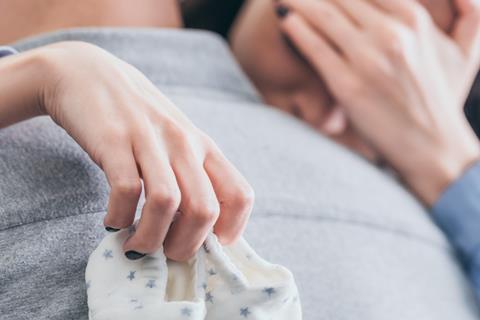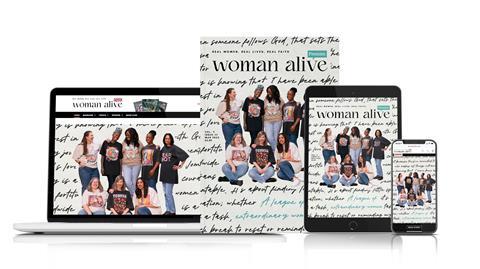To mark Baby Loss Awareness Week (9-15 October) Tammy Tunnah shares about her traumatic miscarriage and how mentally agonising her next pregnancy was, and we look at the place of art therapy in processing baby loss

On 29 March 2020, we found out I was pregnant with our second baby but I knew something wasn’t right. There was something in the back of my mind telling me I was going to have a miscarriage.
At six weeks, I started spotting and getting some lower back pain. Straight away I went to Dr Google and looked up my symptoms, and everything pointed to a miscarriage. I told my midwife but she said a lot of women tended to get spotting around that time. That made me feel a bit better but still didn’t reassure me.
At around ten weeks I started spotting again, but it was heavier and darker this time. My midwife told me not to worry and to wait until my twelve-week scan. Every time I saw that blood my heart sank.
No heartbeat
I had to go to the scan alone due to COVID, and the nurse confirmed that she couldn’t find a heartbeat. It was the worst feeling ever. You never think it would happen to you, especially after having a textbook pregnancy with your first child. I remember just lying there on the bed saying, “No, not me. Why me?”
My husband and I prayed together, asking God to help us decide what to do next. We felt we needed to phone our parents. They prayed for us straight away, and I felt instant peace about everything. God reminded me of a picture he had previous shown me of his hand holding our baby and the words: “Trust me.”
We received a phone call from the early pregnancy clinic, and they gave me two options. I could either take a pill to bring on the miscarriage sooner or wait it out and allow my body to do it by itself. We took the second option.
Worse than labour pains
It was exactly two weeks after my twelve-week scan that I had the miscarriage. The pain was probably worse than full-term labour pains. By 15 June I felt really ill and had massive back pain, and by 17 June I wanted to stay in bed all day.
My husband told me to ring my nurse, and thankfully I listened to him. She wanted me to go for a scan because she suspected I had an infection in the tissue left behind after the miscarriage. She was right.
She said that if I had left it any longer I probably would have collapsed and been rushed to hospital, and that I needed antibiotics and an operation to get rid of the infected tissue. After my operation on 22 June, I finally felt able to put some of that pain and heartache behind me as I was reminded again of the picture God had shown me.
Trying again
I thought I was OK by the time we started trying for another baby three months later, but as excited as I was, I felt so nervous. We found out I was pregnant again in October, and those early days were horrendous.
Pregnancy after miscarriage is harder than people let on. You aren’t able to enjoy it the same way. You’re constantly judging every pain and symptom, and it gets worse when the baby starts moving because you worry the minute it doesn’t move.
Our rainbow baby was born a day before the anniversary of our miscarriage and he is as perfect as the baby we never got to hold. We thank God for them both. Even though my faith was tested, I was reminded daily of Proverbs 3:5-6. I still don’t understand why we had to go through it, but I know that my faith is stronger than ever.
Tammy Tunnah lives in Bristol with her husband and two boys. She works at a nursery and enjoys shopping, visiting National Trust properties, spending time with family and going to church.
Using art to help process baby loss
Some couples who expereince baby loss may go on to have other children, as Tammy did, while others are unable to have children at all. Every situation is unique, but each heartbreaking loss will result in deep grief that needs processing. There are many ways of doing this, but art therapy can be a helpful approach.
Amanda Padley started focusing on pregnancy and baby loss after a close friend experienced a stillbirth. A new mother herself, Amanda trained as an art therapist and now helps others who have been affected by baby loss. She uses art materials to enable people to cope with and communicate their loss without having to find all the right words.
“Baby loss is often an invisible grief that society can find difficult to talk about and acknowledge, as it touches on one of the most painful human experiences,” she explains. “Having a safe place to express such grief is so important. A life lost is never forgotten, but it can become part of our story and carried forward as a precious chapter.
“Art therapy isn’t about producing a finished piece to be displayed, although some clients do make beautiful commemorative pieces. Others find the very process of making helpful. The invisible grief of loss can be made visible through art, and sharing can help in the healing.”
Amanda is a potter, artist and an art psychotherapist working in North Wales for IPAC Options, a crisis and pregnancy loss charity.
If you have been affected by baby loss and would like some support, here are some helpful websites to visit:





























